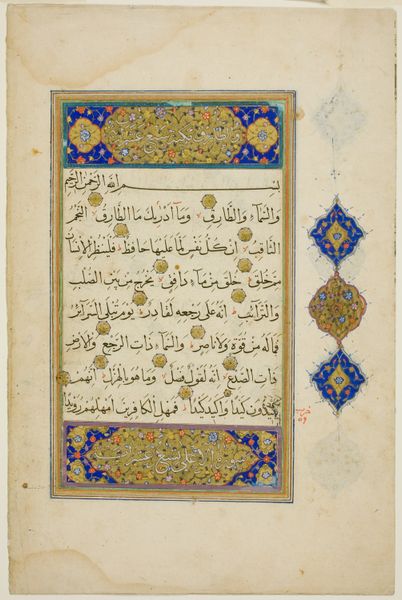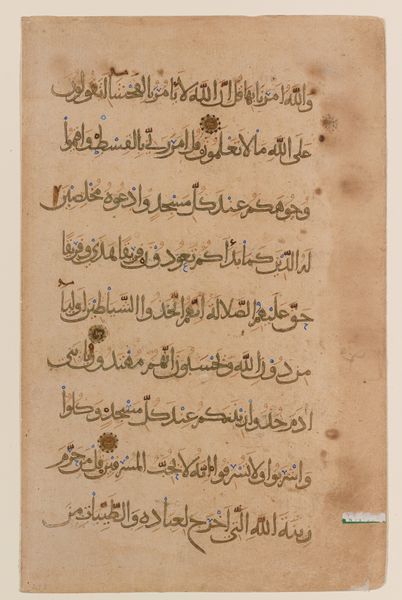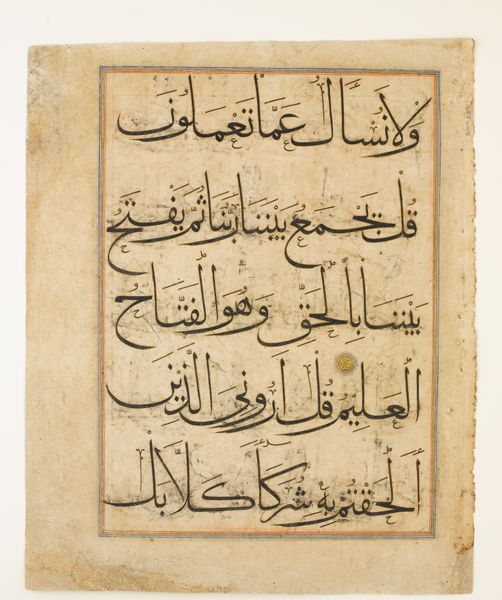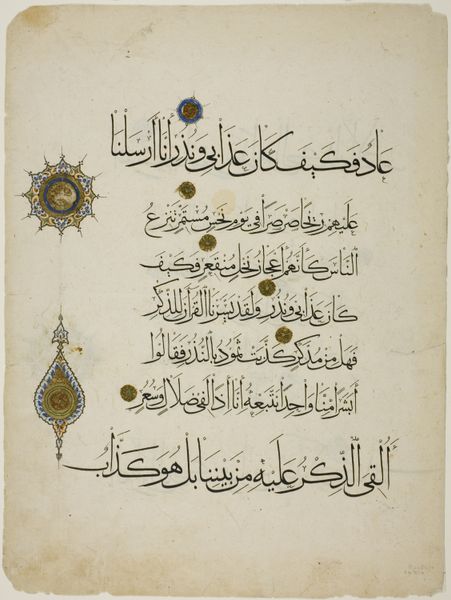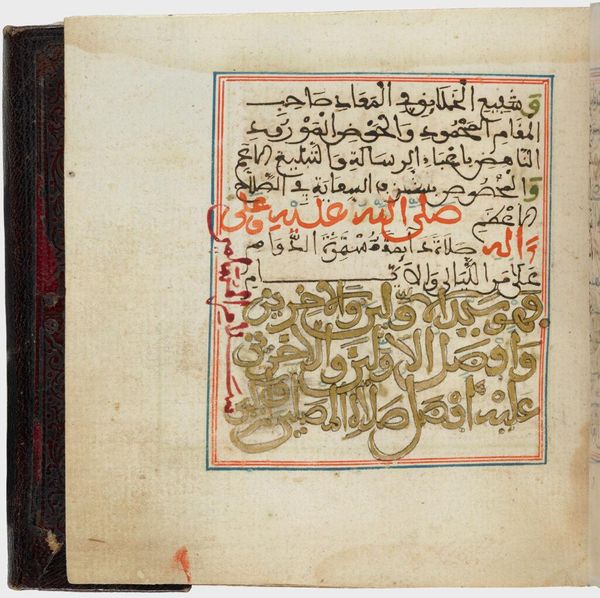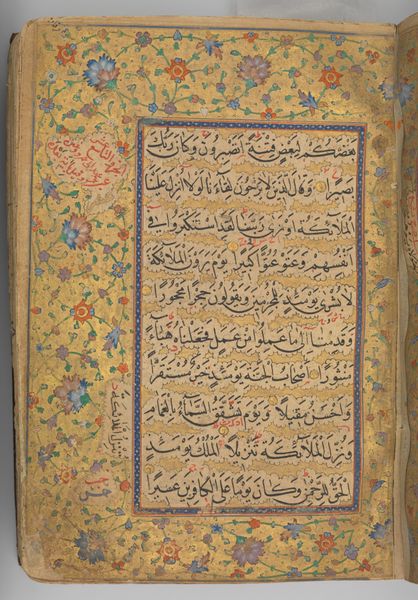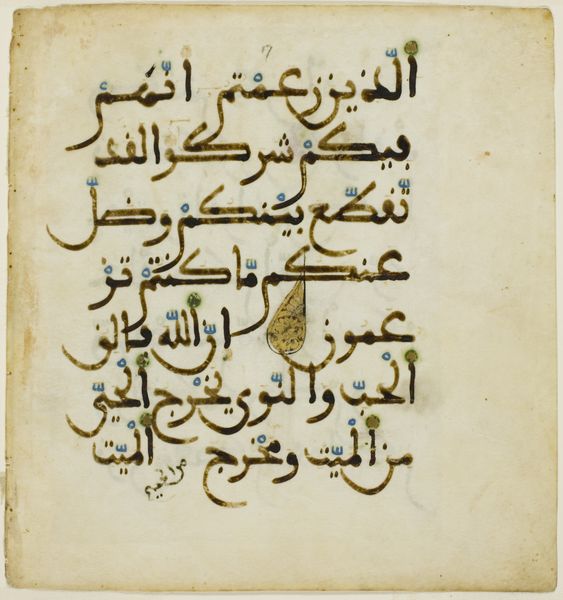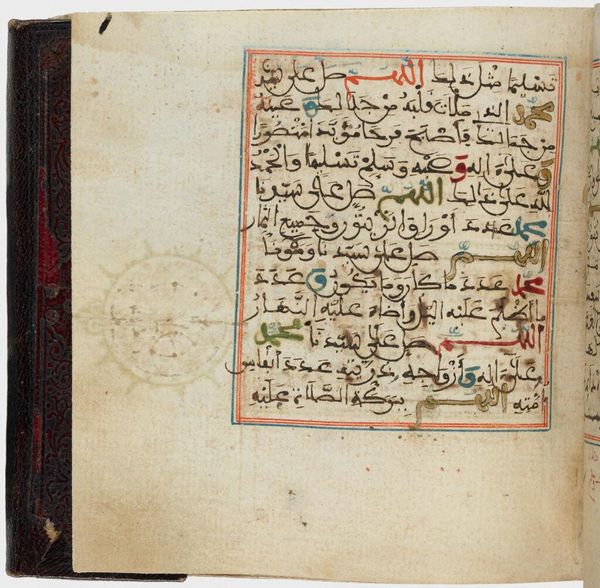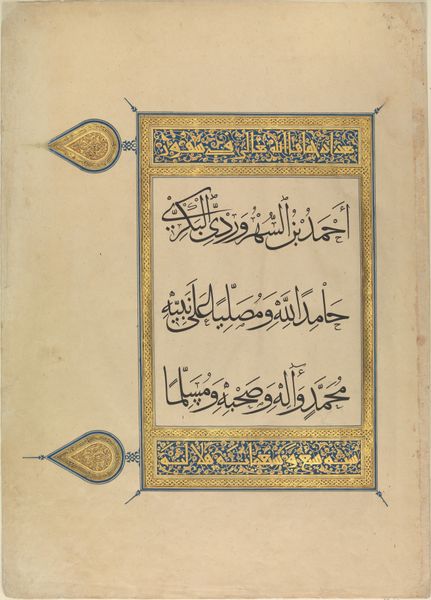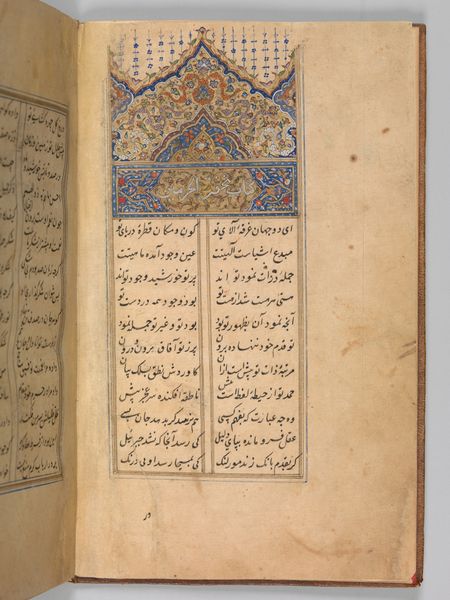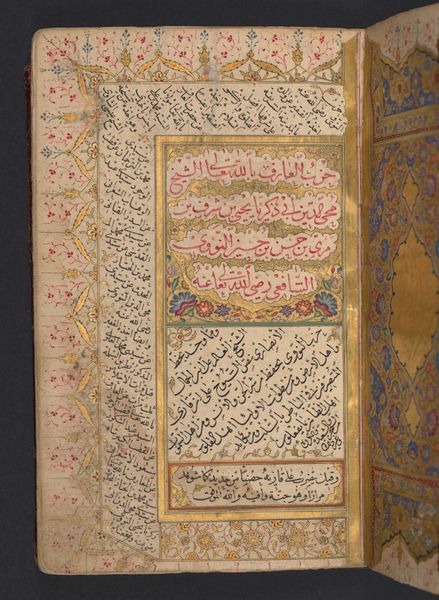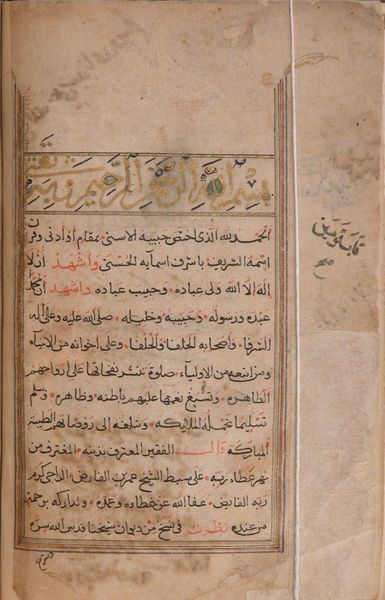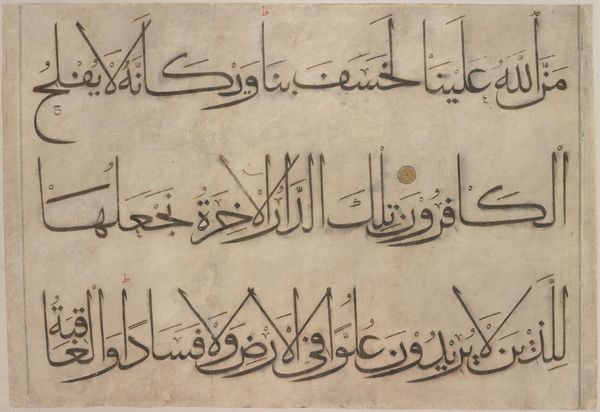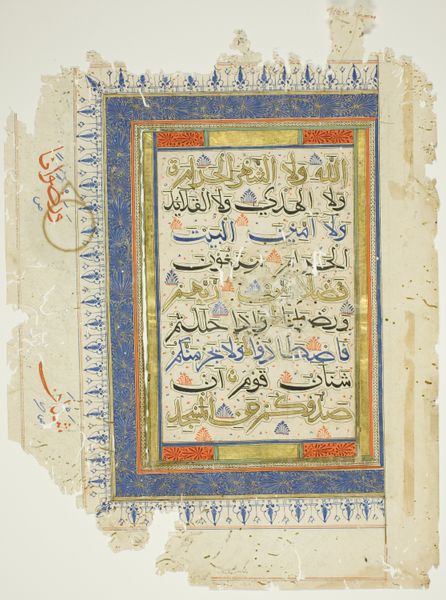
paper, ink
#
medieval
#
parchment
#
paper
#
ink
#
islamic-art
#
miniature
#
calligraphy
Dimensions: 15 9/16 x 12 in. (39.53 x 30.48 cm) (image, sheet)
Copyright: Public Domain
This page from the Koran, made with ink and gold on paper, presents a compelling interplay between text and decoration. The script, rendered in a bold, angular hand, dominates the composition, its rhythmic repetition creating a visual cadence. Horizontal bands, adorned with intricate floral and geometric patterns, divide the page and offer moments of visual respite. The gold detailing, particularly around the floral motifs and within the decorative bands, adds a layer of opulence and highlights the sacred nature of the text. These gilded elements function as visual signifiers, elevating certain passages and guiding the viewer's eye. The anonymous artist employs symmetry and balance. The structure of the page mirrors the structured nature of language itself. The overall effect is one of harmony and order, reflecting the divine message it conveys. This page invites contemplation on the relationship between form and content, and on how visual elements serve to enhance meaning and reverence.
Comments
minneapolisinstituteofart almost 2 years ago
⋮
This exquisite manuscript page typifies the artistic and technical virtuosity accorded illuminated books during the Mamluk period (1250-1517). By the 13th century, more cursive writing styles had replaced kufic as the preferred Koranic script. The main body of the text is written in a cursive style commonly called muhaqqaq script, characterized by tall, slender verticals and sweeping sublinear strokes. The chapter heading, framed in gold and vegetal ornamentation, is in thuluth script. Sultans and amirs commissioned mostly large Korans for the specific mosques and religious foundations they endowed. Multi-volume Korans were popular during the Mamluk period, when standard formats included large single volumes, double volumes, and smaller thirty-volume sets. The scribe, or calligrapher, enjoyed the greatest prestige among the several Muslim artists responsible for producing books.
Join the conversation
Join millions of artists and users on Artera today and experience the ultimate creative platform.
